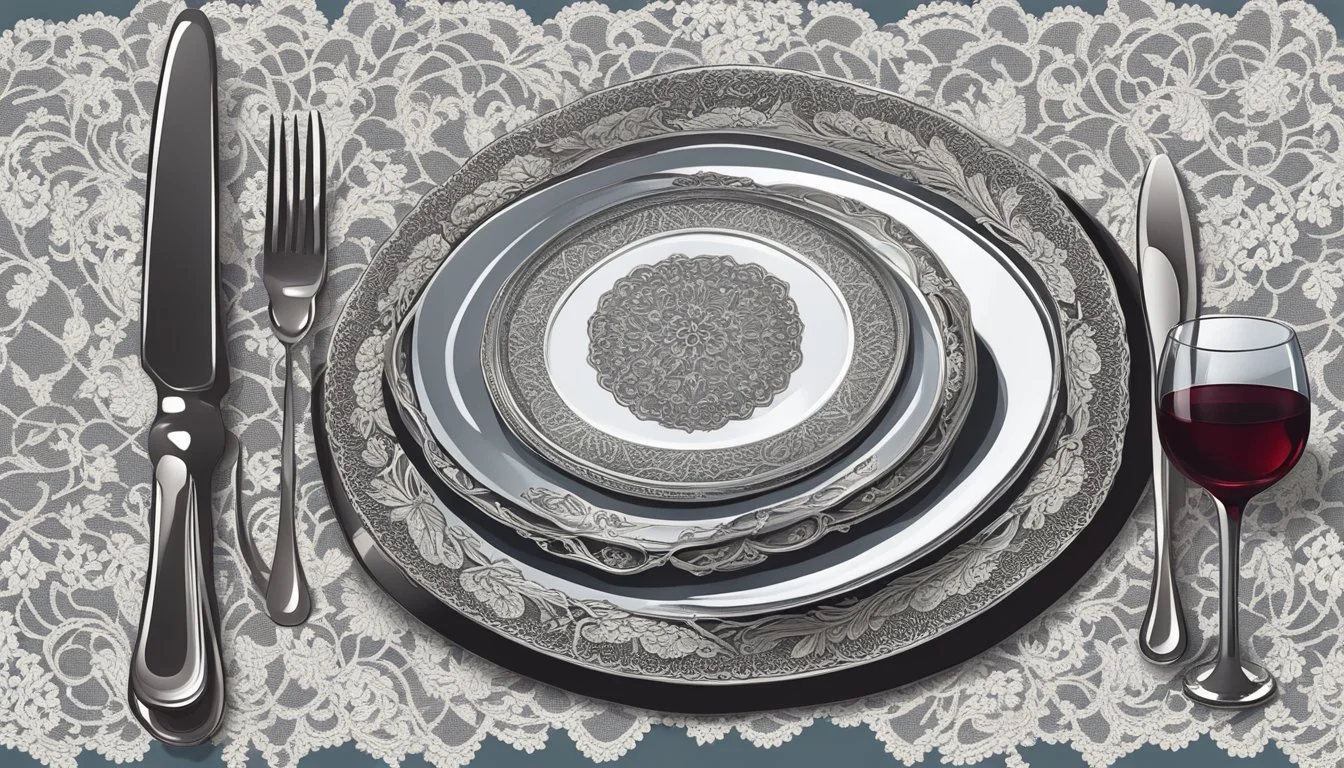Grandpa's Secret Recipe: The Horrifying Appetites of Albert Fish
Unveiling a Killer's Culinary Depravity
Albert Fish, known by chilling monikers like "The Gray Man" and "The Werewolf of Wisteria," left an indelible mark on criminal history. Active in the early 20th century, Fish committed horrific acts against children that shocked the nation. His crimes were made even more disturbing by the letters he sent to his victims' families.
Fish's correspondence provides a rare and unsettling glimpse into the mind of a depraved killer. These letters detailed gruesome acts of torture and murder, revealing the depths of his depravity. Fish's case stands out not only for the nature of his crimes but also for his willingness to document them in writing.
The trial of Albert Fish focused on both his crimes and his mental state. Despite claims of hearing voices from God instructing him to harm children, Fish was found sane enough to stand trial. He was ultimately convicted and sentenced to death for the murder of 10-year-old Grace Budd, though he claimed to have hundreds of victims.
The Life of Albert Fish
Albert Fish led a deeply disturbing life marked by severe mental illness and horrific crimes. His early experiences shaped a depraved individual who would become one of America's most notorious serial killers.
Early Years and Criminal Background
Born in 1870 in Washington D.C., Albert Fish endured a troubled childhood filled with abuse and neglect. His father died when he was young, and his mother placed him in an orphanage where he suffered further mistreatment. As a teenager, Fish began engaging in deviant sexual behaviors and petty crimes.
By his twenties, Fish had developed a criminal record for various offenses including theft and fraud. He married and had six children, but his family life did not curb his increasingly violent tendencies. Fish worked odd jobs as a house painter and handyman, using these roles to gain access to potential victims.
His criminal activities escalated to rape, torture, and murder of children. Fish's crimes went undetected for years due to his unassuming appearance as an elderly grandfather figure.
Psychological Profile
Albert Fish suffered from severe mental illness and sexual paraphilias. Psychiatrists diagnosed him with religious mania, sadomasochism, and pedophilia. Fish experienced auditory hallucinations and believed God commanded him to torture and kill children.
He engaged in self-harm, inserting needles into his body and practicing other forms of masochism. Fish's cannibalistic tendencies emerged as he began consuming parts of his victims, which he considered "hearty meals."
His writings revealed a disturbed mind fixated on torture, mutilation, and cannibalism. Fish took pleasure in inflicting pain on himself and others. Despite his mental illness, he was deemed legally sane to stand trial for his crimes.
The Capture and Trial
Fish's downfall came after the 1928 abduction and murder of 10-year-old Grace Budd. He sent a taunting letter to the girl's family six years later, detailing her gruesome fate. This letter eventually led police to identify and arrest Fish in 1934.
During his trial, Fish's horrific crimes were revealed in graphic detail. He confessed to killing at least three children and molesting countless others. Fish's defense argued for an insanity plea, but the jury found him sane and guilty.
On January 16, 1936, Albert Fish was executed in the electric chair at Sing Sing Prison. His final statement reportedly expressed no remorse for his actions. Fish's case remains one of the most disturbing in American criminal history.
Culinary Parallels
Albert Fish's disturbing appetites intersected with traditional American cuisine in unsettling ways. His twisted interpretations of familiar dishes reflected darker cultural undercurrents beneath the surface of comfort food.
Traditional Dishes with a Twist
Fish perverted classic American recipes to suit his depraved tastes. He prepared "stews" using unconventional ingredients, mimicking the hearty texture of legitimate meat-based versions. His "burgers" contained questionable fillings between innocent-looking buns. Fish's chili recipe deviated far from the spicy, bean-filled staple enjoyed across the country.
These grotesque imitations highlighted how seemingly wholesome dishes could be corrupted. Fish exploited the trust people placed in familiar foods, using their comforting associations as a sinister disguise.
The Role of Comfort Food in American Culture
Comfort foods like chowder and skillet cornbread evoke feelings of nostalgia and security for many Americans. These dishes represent cultural traditions passed down through generations. They offer emotional nourishment during difficult times.
Fish recognized the power of these culinary touchstones. He manipulated their cultural significance to disarm potential victims. By presenting his "meals" as familiar comfort foods, he preyed on people's innate trust in these dishes.
This dark chapter reveals how deeply ingrained comfort foods are in American society. It also exposes the vulnerability created by that cultural attachment.
Secret Recipes Unveiled
Grandpa's hidden culinary treasures spanned hearty mains, savory sides, and indulgent sweets. His dishes showcased traditional techniques and unique flavor combinations.
The Art of Making Stew
Grandpa's beef stew was legendary. He started with cubed chuck roast, searing it to lock in flavor. Onions, carrots, and potatoes joined the pot, along with his secret blend of herbs and spices.
A splash of red wine added depth. The stew simmered for hours, allowing flavors to meld and meat to tenderize. Grandpa insisted on serving it with crusty bread for sopping up every last drop.
His pulled pork recipe employed a similar slow-cooking method. A spice rub and low heat transformed tough cuts into succulent, fall-apart meat.
Delectable Sides to Complement Your Meal
Grandpa's side dishes elevated any main course. His creamy mashed potatoes incorporated roasted garlic and a hint of nutmeg. For a lighter option, he crafted a crisp coleslaw with a tangy vinegar-based dressing.
Homemade bread was another specialty. Grandpa's rolls emerged from the oven golden brown and pillowy soft. Slathered with butter, they were irresistible.
His baked beans recipe combined navy beans, molasses, and bacon for a sweet and smoky flavor profile. These sides paired perfectly with stews, roasts, and barbecue.
Desserts to Die For
Grandpa's desserts were the crowning glory of any meal. His peanut butter cookies had a perfectly crisp exterior and chewy center. The secret? Extra brown sugar and a touch of honey.
Peach cobbler showcased summer's bounty. Fresh peaches nestled under a buttery, cinnamon-spiced crust. A scoop of vanilla ice cream melted into the warm dessert.
For chocolate lovers, Grandpa's triple chocolate brownies satisfied every craving. Dark chocolate, milk chocolate chips, and a drizzle of white chocolate created layers of decadence.
Cooking Techniques and Methods
Albert Fish employed a range of cooking methods in his disturbing culinary practices. His techniques, while horrifying in context, demonstrate a versatile approach to food preparation.
From Grilling to Braising: A Versatile Approach
Fish utilized various cooking methods, adapting techniques to suit different ingredients. He grilled burgers over open flames, achieving a smoky flavor and crisp exterior. For tougher cuts, he employed braising, slow-cooking meat in liquid to tenderize it.
Fish prepared oatmeal using the simmering method, cooking it gently in water or milk. He occasionally added fruits or spices for flavor variation. When making pancakes, Fish used the griddle method, pouring batter onto a hot, flat surface for even cooking.
The Secret Behind Perfect Fried Foods
Fish's fried pork chops gained notoriety for their crispy exterior and juicy interior. He achieved this by pan-frying, using enough oil to cover the bottom of the pan. Fish heated the oil before adding the chops to prevent sticking and ensure a golden-brown crust.
He allowed the oil to reach the proper temperature before cooking. This technique sealed in moisture while creating a crispy texture. Fish also seasoned his fried foods generously, often incorporating spices directly into the coating for enhanced flavor.
The Psychology of Eating
Food impacts our psychological well-being in complex ways. Our food choices and eating habits are influenced by emotions, memories, and social factors.
Comfort Eating and Its Discontents
Comfort foods like hearty meals often provide emotional solace. Many people turn to familiar dishes like spaghetti or pancakes when feeling stressed or sad. These foods can trigger positive memories and temporarily improve mood.
However, relying on comfort eating can lead to unhealthy patterns. Overindulgence in high-calorie comfort foods may result in weight gain and guilt. This can create a cycle of emotional eating and negative feelings.
Healthier comfort food options like oatmeal can provide nurturing without excess calories. Finding non-food ways to cope with emotions is also important for psychological well-being.
The Influence of Food on Mood
Certain foods have been linked to improved mood and cognitive function. A balanced diet rich in fruits, vegetables, and whole grains supports brain health and emotional stability.
Carbohydrate-rich foods like potato salad can boost serotonin levels, promoting calmness. Protein-rich foods provide amino acids essential for neurotransmitter production.
Omega-3 fatty acids found in fish may help alleviate symptoms of depression. B vitamins play a crucial role in mood regulation and energy production.
Dehydration and nutrient deficiencies can negatively impact mood. Maintaining proper nutrition and hydration is key for optimal psychological functioning.
Pairing and Serving Suggestions
Crafting the perfect meal involves thoughtful combinations and balanced plates. Attention to complementary flavors and textures elevates the dining experience.
Creating the Perfect Meal Combo
Burgers pair excellently with crisp potato salad, offering a contrast of warm and cool elements. For a Southern-inspired feast, serve pulled pork alongside tangy coleslaw and cornbread. Grilled corn on the cob complements both burgers and pulled pork, adding a sweet crunch.
Vegetable-based sides like green beans or roasted Brussels sprouts provide lighter options. For dessert, a classic peach cobbler rounds out the meal with its fruity sweetness. Beverages matter too - consider iced tea for a refreshing counterpoint to rich main dishes.
The Anatomy of a Balanced Plate
A well-balanced plate typically includes a protein, a starch, and vegetables. For burgers, this might mean a whole grain bun, lettuce and tomato, and a side of baked sweet potato fries. With pulled pork, opt for a corn muffin, green beans, and a small portion of potato salad.
Color also plays a role in balance. Aim for a variety of hues on the plate - the vibrant orange of sweet potatoes, the deep green of vegetables, and the golden-brown of perfectly cooked meats. This visual appeal enhances the overall dining experience and often indicates a good mix of nutrients.
Preserving Tradition Through Food
Family recipes connect generations through shared culinary experiences. They offer a tangible link to our heritage and create lasting memories around the dinner table.
Honoring Heritage in the Kitchen
Skillet cornbread represents a cornerstone of Southern cooking traditions. Passed down through generations, this simple yet flavorful dish embodies the essence of family gatherings. The cast iron skillet, often inherited, adds a special touch to the crispy crust and tender interior.
Chili recipes vary widely between families, reflecting regional influences and personal tastes. Some swear by secret spice blends, while others insist on specific cooking techniques. These nuances make each family's chili unique and treasured.
Fried pork chops hold a special place in many households. The sizzle of meat hitting hot oil evokes memories of weekend dinners and special occasions. Seasoning methods and accompaniments often reflect cultural backgrounds.
Modern Takes on Classic Recipes
Peanut butter cookies, a beloved treat, have evolved to accommodate changing dietary needs. Gluten-free and vegan versions now exist alongside traditional recipes, ensuring everyone can enjoy this family favorite.
Health-conscious cooks experiment with air fryers for pork chops, reducing oil while maintaining flavor. This adaptation allows families to enjoy familiar tastes with a modern twist.
Vegetarian and plant-based chili recipes have gained popularity. These versions incorporate new ingredients while preserving the comforting essence of the original dish.






